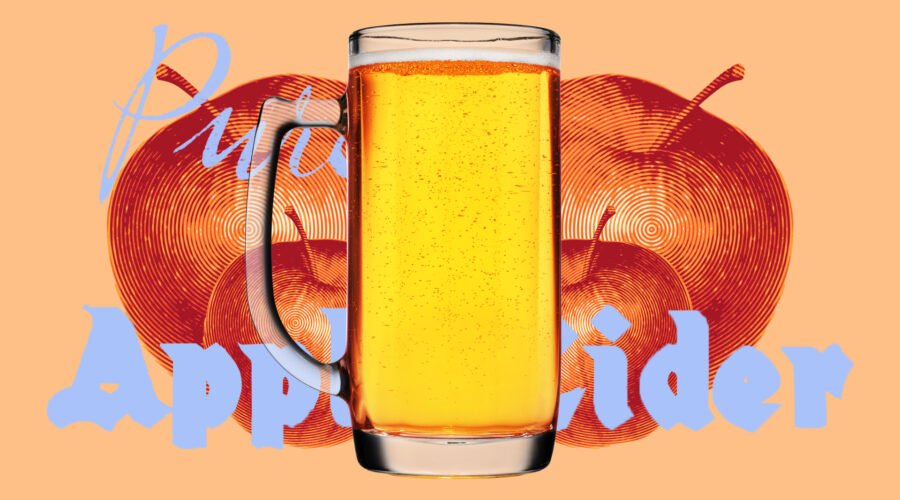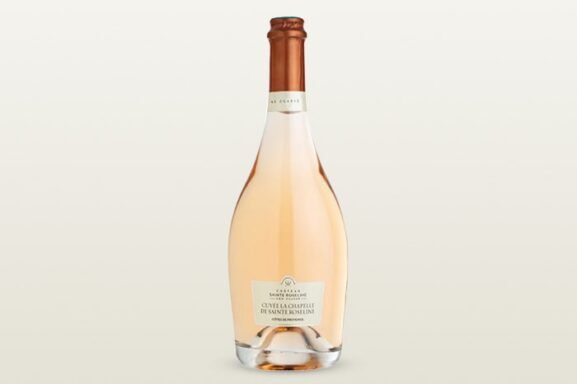Cultural Collaboration, Willful Erasure and the Story of American Cider
From the exaggerated legend of Johnny Appleseed, whose real name was John Chapman, to the image of a steaming apple pie fresh out of the oven, American history is intertwined with apples.
A popular product of this fruit, cider, also has an important role in U.S. history. It holds stories of agricultural advancement and destruction, cultural collaboration and erasure, as well as ongoing battles among industrialism, individualism and craft.
Cidermaking and Its Importance in Early America
“In Colonial America, cider was the most common beverage,” according to Washington State University. Most families would have had an apple orchard, and even children drank it—albeit watered down—with their meals.
Early colonists brought many things to what would become the United States, including apple seeds and cider culture, which varied greatly depending on their countries of origin.
Along with being a food source, cider also acted as a form of currency, and was used as base for making vinegar, a common preservative at the time.
According to David Zakalik, a technician in the Peck Lab and a graduate student at Cornell University, by the 1640s, a few apple varieties that had originated in Great Britain were grown in the U.S. But for the most part, apples available to the early settlers were a mixed bag.
“When people started planting apples in North America, they didn’t really know what they were going to get because for the most part, they were planting apples from seeds,” says Zakalik. “So, what you get out of that is a total game of genetic roulette.”
Whatever apples couldn’t be eaten, dried or used in any other way were often pressed to become hard cider.
“Cider was definitely a way of preserving what you couldn’t use immediately,” says Zakalik. “Sometimes it was a substitute for water.”
Fast forward to the 1840 U.S. presidential election, and William Henry Harrison was positioned as “the log cabin and hard cider candidate” in an effort to appeal to the everyday citizen—a 19th-century precursor to the “beer test” that many contemporary U.S. voters use to weigh candidates’ relatability. Ironically, Harrison came from wealth, unlike opposing candidate Martin Van Buren, who was raised in a working-class family.
But Harrison’s campaign’s imagery spoke to American voters passionate about things like farming and cider. It worked, and he went on to win the election, though he died just 31 days after taking office.
Indigenous Americans’ Contributions to Cider
White settlers often get the lion’s share of credit for early cider, but the drink wouldn’t be what it was or is today had it not been for enslaved people and Indigenous tribes of North America. Unfortunately, the breadth of their contributions may never be known due to lack of record-keeping and willful erasure.
In the early 1600s, when colonists were starting to settle what is now Virginia and other states in the Southeast region of the U.S., plantation owners often planted apple orchards to increase their property’s value. To maintain these trees, landowners relied on enslaved people, indentured servants and the forced labor of Indigenous people, according to American Cider: A Modern Guide to a Historic Beverage.
Tragically, these workers and their expertise were forcibly relocated from the region in 1830, when the Indian Removal Act evicted Cherokee and Cree people from what is now North Carolina and Tennessee. “People went through afterwards and found a lot of [apple] varieties that they had cultivated,” says Dan Pucci, co-author of American Cider.
Jarvis Van Buren (1801–1885), a nurseryman from Georgia and cousin to eighth U.S. President Martin Van Buren, realized that these new varieties had a longer shelf life than most fruits at the time. After collecting seeds and trees, he “began cultivating them commercially in Georgia in the 1850s,” says Pucci. Van Buren went on to start Gloaming Nursery, which helped usher in a new age where the South was no longer as dependent on apples from the North. His business, however, was built on the trees Indigenous Americans had cultivated.
We see the impacts of Indigenous Americans in cider today. For instance, Washington statewas home to “the oldest domestic fruit tree,” which was brought to the United States in 1826. Sadly, it died two years ago. But it was cultivated by Indigenous populations, this tree “is the likely progenitor of today’s $3.4 billion apple industry of Washington,” writes Mary Rose for Confluence Library.
Enslaved People’s Contributions to Cider

Historical documentation shows that many of the Founding Fathers were known to enjoy cider. However, the contributions of enslaved Black people to cider have largely been lost to history, at times intentionally.
“The processes of power regarding race and class meant enslaved people were often left out of narratives kept by the white wealthy people who enslaved them,” says Brandon Michael Dillard, manager of historic interpretation at Monticello.
George Washington’s Mount Vernon, for example, was around 8,000 acres and made up of several farms, with many orchards.
“Overseers and enslaved people ran the apples through a hand-cranked cider mill, to cut the apples up and then press the juice in cider presses,” says Steve Bashore, manager of historic trades at Mount Vernon.
Some of the Black overseers of Mount Vernon’s orchards were named Will, Israel Morris and Davy Gray. Like most enslaved people, however, not much was documented or is known about their lives, but historians do know that, as overseers, they would have cultivated the orchards and had a direct hand in cidermaking.
“Cider, spelled cyder in the [Mount Vernon] records, was part of the sustenance of the estate for the enslaved and paid staff, and for the Washingtons,” says Bashore.
Enslaved people were similarly instrumental in the cidermaking at Jefferson’s Monticello.
“People at Monticello drank cider regularly,” says Dillard. “In 1819, Jefferson noted to a friend that ‘malt liquors and cyder are my table drinks.’”

“Enslaved laborers at Monticello planted, tended and harvested apples,” says Dillard. “Their care and attention to the orchards created this renowned product, and it is their labor that provided for this developing foodway in Virginia.”
Two people in particular, George and Ursula Granger, were vital to life at Monticello. Jefferson purchased the couple in 1773 and they worked the plantation until they died more than 20 years later.
“George and Ursula Granger both served in crucial roles for the production of cider,” says Dillard. “George Granger oversaw much of the agricultural production at Monticello, but Jefferson specified his role in the orchards.”
For instance, in Jefferson’s Farm Book, a record of the people he enslaved, he wrote, “George still to be reserved to take care of my orchards.”
Jefferson also noted that he was waiting on George to see when different harvests would be ready to press into cider and what the yields would be like.
“Jefferson’s reference to [George] Granger demonstrates not only [George] Granger’s familiarity with the process, but also his direct responsibility for producing most of it himself,” says Dillard. “The passage certainly illuminates [George] Granger’s expertise.”
In 1800, Jefferson wrote to his son-in-law, “I must get Martha [Jefferson’s daughter and Randolph’s wife] or yourself to give orders for bottling the cyder in the proper season in March. There is nobody there but Ursula who unites trust [and] skill to do it. She may take any body she pleases to aid her.”
According to Dillard, this passage “implies her skill with the work by clearly demonstrating his deference for her leadership in the process.”
Cider’s Fall from Popularity
One of the many factors that led to cider’s fall from popularity was the introduction of codling moths and apple scab fungus, which decimated orchards, according to Drinking History. According to Zakalik, it’s not known exactly when these two pests arrived, but they were likely brought over from Europe in the 18th century.
Along with orchard pests, the 1800s also saw a major cultural shift in the U.S. as the Industrial Revolution was underway.
As “farming changes, as cities are built, as people move off of the farm and as large industries are being pursued, cider was never part of that conversation,” says Pucci. “So, it wasn’t morality that killed it. It was more about economics. If you’re building these large cities and industrial manufacturing, it’s much easier to work with grain than it is to work with apples.”
Along with a changing industry, there was also a shift in the attitude toward alcohol with the growing Temperance movement.
Pucci notes that most cider drinkers were of Northern European descent. “They were the first to really embrace the xenophobic tendencies of Temperance,” says Pucci. “And they basically stopped drinking.”
When the 18th Amendment was repealed in 1933, much of America had moved from farms into cities, where it was easier to work with grains to produce beer. Throughout the 1850s and early 1900s, there was also a large influx of immigrants from Germany and Eastern Europe, who brought their beer and beer hall culture with them.
The Future of American Cider
Today, “there are around 1,000 cideries in the United States,” says Michelle McGrath, executive director of the American Cider Association. However, “it’s incredibly difficult to estimate because cideries, at the federal level and at most state levels, operate under a winery license.”
But between 2011—when the widely distributed cidery Angry Orchard opened—and 2019, around 600 cideries debuted in the U.S., according to data from the American Cider Association.
McGrath believes craft beer plus the gluten-free and local food movements paved the way for cider’s growth over the last decade or so. If you combine these three things, she says, “cider makes a lot of sense.”
As the U.S. market for and interest in cider continues to expand, cider professionals see an opportunity to keep the beverage connected to its cultural and agricultural history.
“I think we are at an inflection point where we are getting ready to see phase two of the U.S. cider boom,” says McGrath. “And phase one was all about introducing America to cider. It wasn’t part of our recent memory. And it was just reminding people that cider exists. Now we’ve got two generations who are what I call ‘cider natives.’ They grew up going to cider bars, they grew up going to cideries—it’s just part of the culture. And so, the next phase is going to be more about the nuances of cider. Understanding that the apple choices really matter, understanding that there’s some regionality, but also discovering and embracing what is American style [cider].”
Pucci agrees.
“We’re going to see a lot more development of individuality within the product,” says Pucci. He notes that cider makers across the country have replanted trees and are utilizing new resources to truly make the product their own.
“That’s really going to change the game across the country,” he says.
As more places start to produce cider, it’s important to remember cider’s deep American roots, too. There’s greatness and darkness to every corner of history, and part of appreciating cider and its place in American life is acknowledging all facets of its origins and evolution.
“As with so much of American culture, the mixture of Indigenous, African and European plants, people and traditions in the American South ushered in something wholly new to the world,” says Dillard. “Through the pain and horror of slavery and colonization, the triumph of the human spirit remains in these legacies of the millions who survived–and the legacies left behind by those who did not.”




